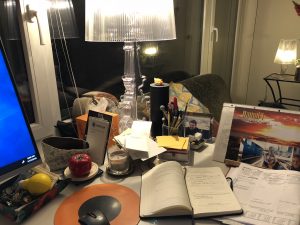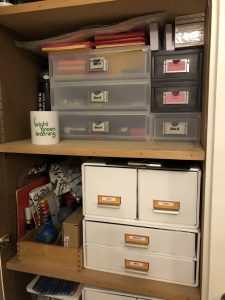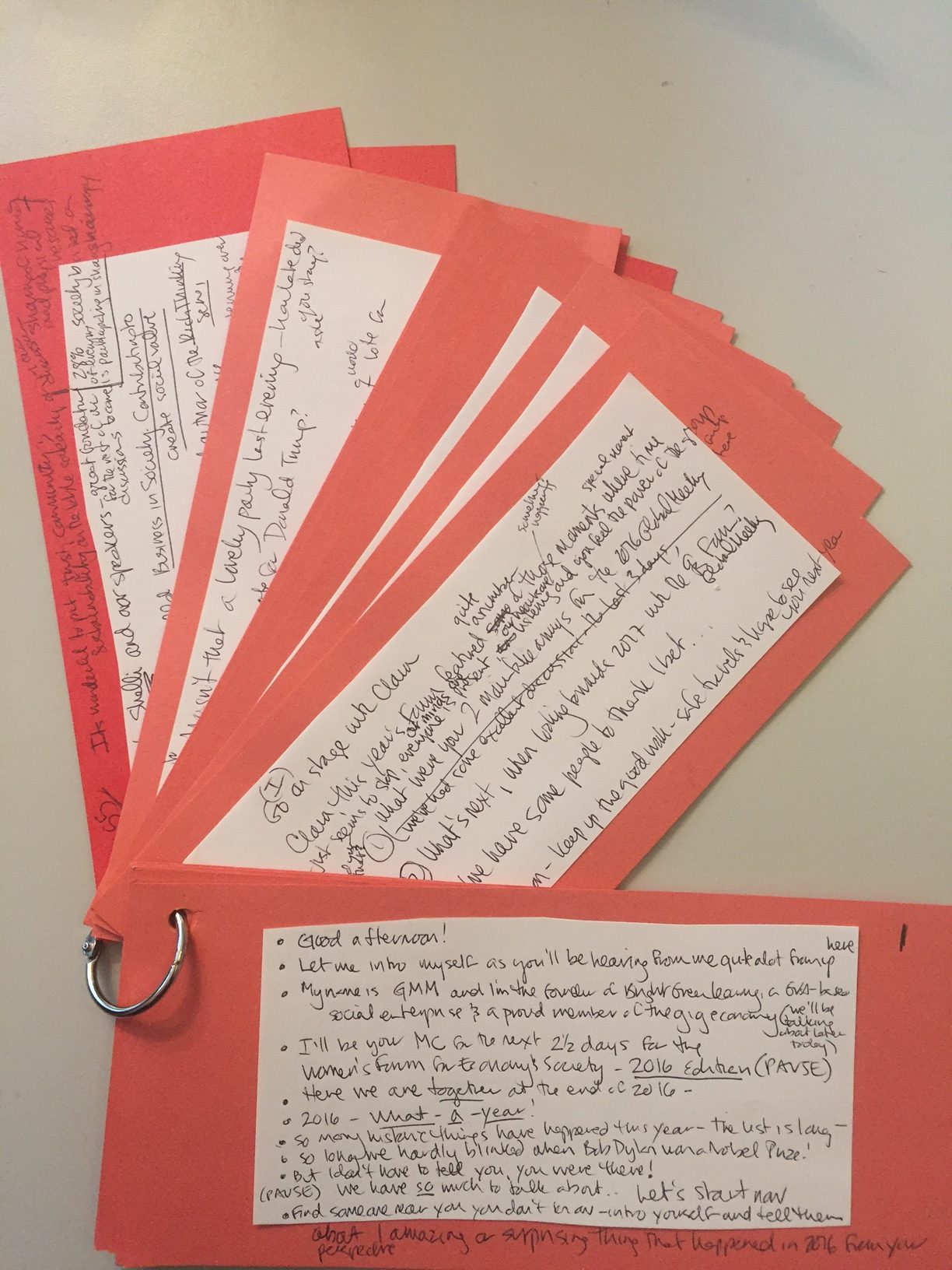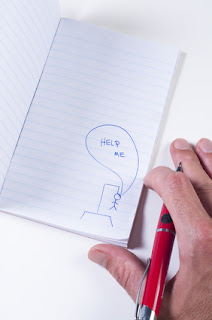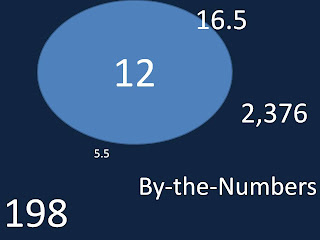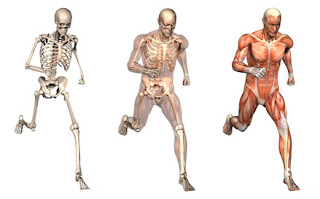When the days run together without a clear delineation between the work week and the weekend; when you need to work but have other things on your mind (feeding a family of four three meals a day with an increasingly weird set of back cupboard ingredients, supporting your kids to go to school and stop playing online poker, even if it “isn’t for money”; trying to come up with something interesting to say when you call your parents for the 100th time and you really don’t have anything interesting to say – thank goodness for vegetable gardens), not to mention feeling the intensifying gravity of a global pandemic – you need to set up some sturdy scaffolding to structure your days.
Even with your home office in place, as informal or impermanent (you hope) as it might be; even with real work to do; even with the intention and eagerness to do something different today! that takes you out of the Groundhog Day loop that you feel you are in when you wake up every morning – even with all these positive motivations, it can still be hard to get things done and feel truly productive in the currently abnormal situation.
Like you, I have a my lists of things to accomplish for work and home- both the tasks with deadlines, as well as that long list of “sometimes/maybe” things that perhaps this period of no travel might finally afford me the time to accomplish. But somehow it feels harder to get going every day, especially now after 40+ days and counting of staying at home. Is my current productivity practice up to the task of fighting these new external and internal stressors for my limited attention? As a life-long student of productivity, I try a lot of different things aimed at personal efficiency and effectiveness. For me, it is always a good time to learn something new, and now more than ever. Where to start?
In the present fluidity of hours, days, and weeks, and with the level of uncertainty that is out there in terms of when things will change, I am feeling a greater need for structure even beyond my traditional GTD context lists. I need this additional structure to help me make decisions about what I need to do and when I should do it (e.g. when I have the appropriate mental bandwidth).
There are a million ways to do this- this blog post is just about what I have put in place during this unique historic moment. It’s not a perfect system, but it’s working for me right now.
Creating Structure
Weekly: I structure my time using a couple of different tools. One is a weekly planning card that I fill in on Sundays for the upcoming week. This is a useful printed notepad template by BeforeBreakfast which has a place to indicate 3 weekly objectives (things I want to have accomplished by the end of the week), as well as daily blocks where I can note specific daily tasks, affording me an overview to make sure I am blocking enough time throughout the week to accomplish them. These daily blocks I divide with a line through the middle, above which I write my “Deep Work” (Cal Newport) and below the “Shallow Work”. I separate these two kinds of work because I want to make sure that I “move the needle” every day, in the words of productivity podcaster David Sparks, if humanly possible. That is, to make some progress on the creative projects I have ongoing (writing, PhD research, developing a new piece of curriculum, etc.) in addition to doing other work that is more incremental and doesn’t necessarily bring something new into the world (meetings, admin, scheduling, email, etc.)
Daily: With my week planned at the 10,000 foot level, I use my daily calendar which is a week-to-view Lett’s quarto (I have used the same calendar for over 15 years now) and includes scheduling from 08:00 – 20:00, to block schedule (sometimes called hyper scheduling) my day. I might do this the night before or in the morning, whenever I feel I have the best overview of my day, to block time for discrete work (usually in 30 minutes to 1 hour blocks) around the hard landscaping of e-meetings and calls.
Within my day, I also block time to walk, cook with those weird ingredients, have lunch with my family, and do an online Pilates class. These are scheduled too. I also want to start to integrate more artistic activities that use a different part of my brain, and let rest the part that is being used at my desk. This week I plan to unmothball my trumpet which is sitting in its case under my desk and see what is left of my high school embouchure (yes, after 40+ days it has gotten to that point.)
Creating Accountability for Completion
When there is no office, no travel, no long string of F2F meetings, etc. creating your own aspirational schedule is one step, but the best laid plans, as they say. In addition to having none of this office business, you also have no colleagues, no line manager, and no coffee buddies (at least in your home office.) No one may be checking in regularly to see how that document, or proposal or article is going. There are a number of different ways to create accountability if that’s something that helps you not fall into the black holes of procrastination like social media, watching YouTube videos of Stephen Colbert et al., or sparking joy by meticulously tidying up your desk, over and over again. My current favorite is FocusMate or FocusFriends or whatever you want to call it. I am not going to go into too much detail on this as I wrote a whole blog post on how to connect with others while making progress on your own stuff (When You’re Not in the Room Where It Happens: Getting Work Done at Home (Even Temporarily). I have gotten into a nice routine over these past weeks with a couple of friends who are also trying to do more than email during this period. With one of these friends, who works in a completely different field, we work together in parallel almost every day, chatting a few times a day to share what we are doing, accomplishing (or not), and what our perceived barriers are. When we can, we go into structured blocks of working one hour synchronously on Skype, with brief reporting on achievements on the hour. Other times when we have online meetings or other interruptions, we just write on Skype what we will get accomplished during the day, write updates during the day on how we are doing, and diligently read what the other person has written and provide comments and encouragement. Then we might call at the end of the day to debrief on how well we did on reaching our goals.
Another useful accountability mechanism is a monthly habit tracker that I review every night. I created this at the beginning of the Covid-19 stay-at-home period to keep myself focused on 10 things that I want to do every day. This is a simple A4 matrix that has the key words for the 10 things I want to do every day in columns across the top of the page, and the days of the month down the left hand side in rows. There is a line to write in the month at the top, so I can reprint a new sheet each month. At the bottom I have a little more description of the key words with my intentions, be they “Sleep” – sleep 8 hours a night, “Family” – do something with my immediate locked-in family every day; “Friends” – reach out to friends somewhere in the world every day; “Deep Work” – work on one of my creative projects every day; or “Meditate” – take some time for this daily; etc. Every night I review this list and make an “X” in the column if I did this. The daily reminder and the visual is useful to keep the habits alive, to confront myself on what’s really important, and challenge myself with the Jerry Seinfeld strategy of “not breaking the chain.”
Creating Habits and Reflection
Inspired by James Clear’s Atomic Habits, a habit tracker helps you set your intentions regarding the good habits you want to create, and then keep them front of mind so you remember to build them in at least a little bit every day. I used to lose my nascent good habits in periods of frequent travel, where my daily routine would be demolished by novelty, other people’s schedules, and intense fatigue. Now that their is no challenge whatsoever to my routine, I want to experiment with this method to entrench some good habits now that will support productivity and overall well being now and in the future.
Daily reflection is another habit I am working on through daily journaling. I write short entries at the end of the day and am using four fields as writing prompts: 1) Highlights of the day; 2) Achievements (however big or small); 3) Gratitude – this has been helpful when things seem to be wobbly around you; and 4) What I got out of the day – this latter sparks more overarching reflections and connections that I spot, such as how on days when I do a longer meditation at night I sleep better, or when I schedule the deep work in the morning it takes me less time to accomplish, etc.
For my journal, I am using a small notebook with removable pages, so that when it gets full I can take pages out and put in new ones. I also have some “master list” pages at the front where I am tracking some additional items such as, “Achievements” (bigger things – to remind myself that I can finish things, even when life is messy and complicated); “Things I said ‘No’ to (and Why)’ (since this is an area I am working on and trying to actively manage), and “Productivity Tips” (shiny new things or useful hacks I have picked up and want to try).
A final input for daily and weekly reflection for me is time tracking. I have set up a time tracking Excel spreadsheet (although there are lots of apps that do it automatically, I like to do it manually for now), to help me see if my projections for block timing, etc. are realistic or not. Normally they are not – I tend to underestimate how much time it will take me to do something. (For example, I thought this blog post would take me 1-2 hours, and now 4 hours and some interuptions later I am still agonizing over editing!) Not only do I track how much time I am spending, but when I am spending it during the day, by putting in start and stop times. That has helped me develop an understanding of when in the day I am most productive (Biological Prime Time) so that I can be more effective at scheduling, and know when breaks are needed or a significant change of tune (back to my trumpet).
Time tracking has its practical function, of course, if you are a project-based worker as I am. But it also builds an excellent database, along with the habit tracker, calendar and journal, to support reflection and provide evidence needed to make continuous adaptations to your system.
Too much structure? Maybe, but it actually doesn’t take that long in the aggregate, and in times of fluidity, uncertainty, and what seems like unlimited hours free to sit at my desk, I feel this is helping me focus my attention on the right things and not always on the momentousness of everything else going on right now, just outside my front door.









